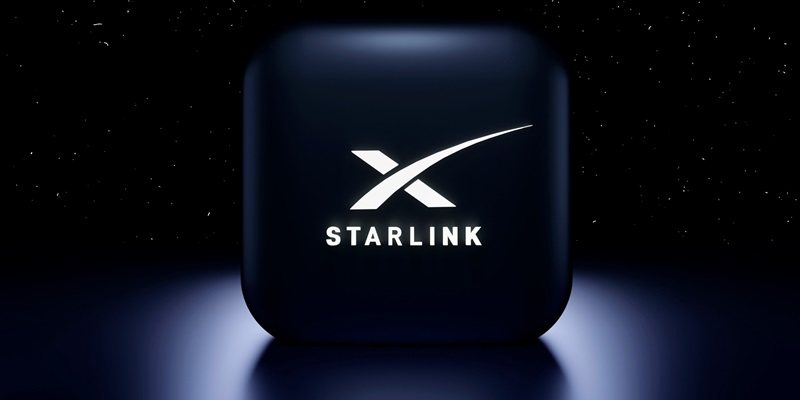The battle for internet supremacy is intensifying as Starlink’s satellite internet squares off against 5G networks. Both are pivotal in shaping global connectivity, but they come with distinct pros and cons. Starlink, helmed by SpaceX, offers widespread coverage even in remote areas, relying on a constellation of satellites. It’s a boon for regions untouched by traditional broadband, but its initial costs and potential space debris raise concerns. On the other hand, 5G boasts super-fast speeds and low latency, perfect for urban environments and advanced applications like autonomous vehicles. However, its infrastructure is expensive, and its range is limited, necessitating numerous towers for adequate coverage. As these technologies evolve, a partnership between them may very well define the future of how we connect, leveraging their respective strengths to achieve universal access to reliable, high-speed internet.
Starlink: A Satellite Internet Revolution
Reaching the Unreachable
Elon Musk’s SpaceX innovation, Starlink, is set to revolutionize internet access globally. Aiming to deliver lightning-fast internet speeds of up to 1 Gbps, Starlink’s satellite network is geared toward connecting even the most isolated regions. For years, sparse populations have been overlooked by standard ISPs due to the prohibitive cost of infrastructure. Conversely, Starlink’s vision extends beyond geographical boundaries, offering a high-tech remedy where ground services fall short. Although the initial investment is steep—with hardware priced at $499 and a recurrent $99 monthly service cost—the prospect is enticing, especially for remote areas devoid of dependable internet, Starlink presents a groundbreaking and long-awaited solution. The project underscores a pivotal shift toward a more inclusive digital era, where high-speed connectivity becomes a universal commodity.
The Price of Progress
Starlink, SpaceX’s venture to bring the internet to remote corners of the globe, encounters a significant barrier: cost. The service, adding both the initial setup and the ongoing fee, may be too steep for individuals in less affluent regions – ironically, the same areas that Starlink aims to connect. These upfront costs challenge the accessibility that Starlink promises. While subsidies or price drops may eventually alleviate this, the fundamental issue is that the technology is currently out of reach for many who need it most. How SpaceX will tackle this affordability issue is crucial, as it will influence Starlink’s success in bridging the digital divide. The evolution of their pricing strategy will be pivotal in ensuring that the promise of global connectivity becomes a reality for all.
5G: The Urban Connectivity Frontier
Accelerating Urban Infrastructure
5G technology is set to revolutionize internet connectivity with lightning-fast speeds reaching 10 Gbps and minimal latency, offering a transformative experience for users and powering innovations in the Internet of Things (IoT), smart city development, and data-reliant industries. This shift to ultra-fast communication promises to enhance how we utilize the web for both personal and professional purposes.
Despite its potential, 5G’s rollout is challenging, with the major focus being on urban areas. The need for a closely-knit array of towers and small cells to maintain high-speed service makes infrastructure development costly and complex. Urban concentration is thus a practical approach considering the heavy investments and logistical efforts required to deploy 5G, although it leaves rural areas with less attention in the early phases of this technological advancement. The expansion and adaptation of 5G thus remain a balance between its promising capabilities and the reality of its implementation hurdles.
Challenges in 5G Deployment
The rollout of 5G technology offers the lure of substantial increases in speed and seamless connectivity, but it comes with challenges unique to its framework. The task of blanket coverage through small cells demands an extensive partnership spanning governments, providers, and local communities. Big cities are likely to adopt 5G quicker, thanks to their already dense infrastructures and higher demand. In contrast, the economics of expanding 5G into sparsely populated rural areas may not justify the investment, potentially leaving those spaces less connected. Furthermore, the dense network of antennas essential for 5G’s function could raise both aesthetic objections and health worries among the public, possibly delaying its acceptance and widespread adoption. Forward movement in 5G technology is thus entwined with the intricacies of technological advances, regulatory frameworks, and societal approval.
Conclusion: Complementing Technologies for a Connected Future
Building a Cohesive Network
The competition between Starlink and 5G is not a simple one; it’s a complex interplay where both technologies serve distinct purposes. Starlink leaps forward by connecting remote areas with reliable internet, addressing a need 5G can’t fully meet due to its infrastructure demands. On the flip side, 5G shines in urban environments, utilizing its robust infrastructure to meet the high-speed demands of dense populations. Rather than canceling each other out, they’re shaping a future where everyone can access the internet from anywhere. Their journeys might diverge, but they’re directed toward a shared horizon of universal connectivity. This complementary relationship heralds an era of tech synergy rather than rivalry, as Starlink’s expansive satellite network reaches where 5G’s terrestrial antennas cannot, and 5G delivers high-speed, low-latency connections where cities thrive. Together, these technologies weave a web of connectivity, each strengthening where the other may not reach.
A More Connected World
The real victory in the advancement of connectivity technologies won’t be one technology outdoing another, but how well they merge to cater to people worldwide. This synergy points toward a future where high-speed internet is ubiquitous, reaching every part of the planet. With Starlink beaming data from space and 5G transmitting from terrestrial towers, both play essential roles in crafting a connected, equitable world. The evolving landscape of global connectivity is set to be a tapestry of different technologies, each contributing to eradicating the digital divide and uniting humanity. Such integration is crucial for realizing a future where fast internet is a standard for everyone, bridging the gap between different regions and creating a universally connected society.

